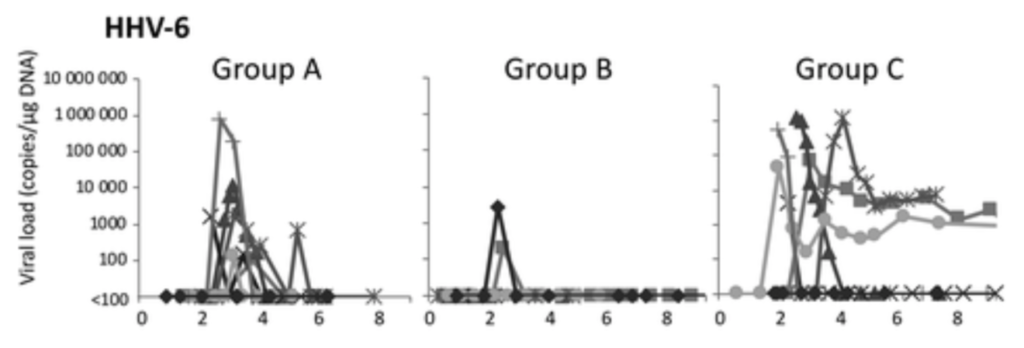High dose steroids given in the first week appear to prevent HHV-6 reactivation in DRESS/DIHS patients by suppressing T-cell activation and serum interleukin-2 receptor (sIL-2R) levels. In contrast, a late start of steroid therapy resulted in a persistently high viral load for at least three weeks.
Drug-induced hypersensitivity syndrome (DIHS)/drug reduced with eosinophilia and systemic symptoms (DRESS) is a severe drug reaction characterized by high fever, skin eruptions, and hematological abnormalities. To clarify the relationship between corticosteroid dose, administration time, and viral reactivation, Tohyama et al measured viral loads during treatments with different doses and start times.

Viral loads in DRESS/DIHS patients who were (A) not treated with steroids, (B) treated early with high dose steroids or (C) treated low dose steroids or treated late with high dose steroids. Source: Journal of Dermatology, March 2020
HHV-6, CMV, and EBV viral loads were measured in patients who received therapy (A) without systemic corticosteroids, (B) with high-dose corticosteroids within 1 week after disease onset, or (C) with either high-dose corticosteroids given late or low-dose corticosteroids. Patients who received high-dose corticosteroids within 1 week after disease onset experienced fewer instances of HHV-6 reactivation, while instances of CMV and EBV reactivations were comparable across all treatments. There were no differences between groups in DRESS severity over the course of treatment.
The group’s findings indicate that careful timing and dosage of corticosteroid therapy may help control HHV-6 reactivations in DIHS/DRESS.
Read the full text: Tohyama 2020

